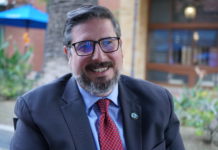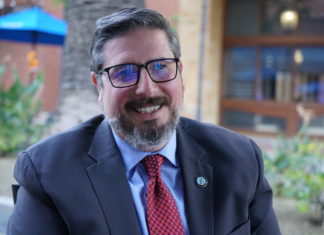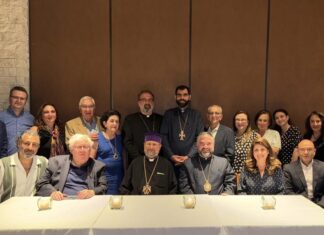By Alin K. Gregorian
Mirror-Spectator Staff
FRAMINGHAM, Mass. — Prof. Richard Hovannisian brought his sharp wit and extensive knowledge to the Holy Translators Church here on April 17 at a program about a tour that the National Association for Armenian Studies and Research (NAASR) had sponsored to Cilicia last year.
Stepan Piligian opened the program, welcoming all to the church.
Then, Marc Mamigonian, director of academic affairs at NAASR, and Raffi Yeghiayan, the chairman of the Board of NAASR, spoke.
Yeghiayan said NAASR has sponsored a couple of trips to Western Armenian lands and to have Hovannisian as the resident historian on board was “a privilege.” He also spoke about NAASR’s expanding role in the West Coast, as well as in some southern states.







